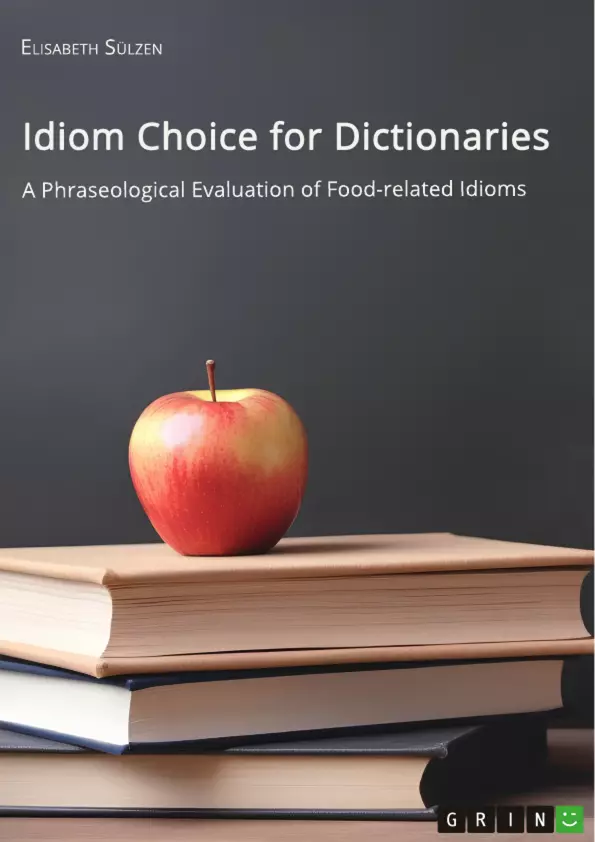This paper examines how it can be decided which idioms to include in a dictionary, what criteria need to be met, and how to make sure the layout is helpful and clear to users. First, the research background is laid down, including a definition of idioms and an examination of their challenges. In this part, idioms in dictionaries will also be focused on, as well as food-related idioms. Next, 25 food-related idioms will be analysed in terms of frequency, transparency, frozenness and size, as those categories give the most information about their function and perception. Finally, the results are discussed, focusing on implications for dictionaries.
For the analysis, the Corpus of Contemporary American English (COCA) is used, mainly for checking the frequency of idioms and creating a frozenness scale. The transparency of each idiom is rated by the researcher with feedback from peers, and for size, the letters in each idiom are counted automatically with the Excel COUNT function. It has to be considered that this study is of a rather small scope and is therefore not representative, but can be seen more as a case study. The suggestions and recommendations made at the end can still be applied to most idiom representations in dictionaries. The goal of this paper is to advise dictionary creators in their view on idioms, and also inform dictionary users on the use of idioms in dictionaries in general.
Table of Contents
- Introduction
- Research Background
- Idioms and their Challenges
- Idioms in Dictionaries
- Food-related Idioms
- Analysis
- Material and Methods
- Analysing Food-related Idioms
- Frequency
- Transparency
- Frozenness
- Size
- Discussion and Recommendations for Dictionaries
- Conclusion
Objectives and Key Themes
This paper aims to advise dictionary creators on the selection and representation of idioms, particularly food-related idioms, in dictionaries. It also seeks to inform dictionary users about the use of idioms in dictionaries in general.
- The challenges of understanding and defining idioms
- The role of idioms in dictionaries
- An analysis of food-related idioms based on frequency, transparency, frozenness, and size
- Recommendations for dictionary creators regarding the inclusion and presentation of idioms
- The importance of idioms for understanding language and culture
Chapter Summaries
The introduction provides an overview of the research topic, emphasizing the challenges idioms pose to language learners and the importance of their inclusion in dictionaries. The paper focuses on food-related idioms as a case study, highlighting their unique features and complexities.
The research background chapter lays out the theoretical foundation for the study, exploring the nature of idioms, their relation to metaphors, and the challenges of presenting them in dictionaries. It also examines the specific characteristics of food-related idioms.
The analysis chapter delves into the methodology employed in the study, including the use of the Corpus of Contemporary American English (COCA) for frequency analysis. It also outlines the criteria used to assess the transparency, frozenness, and size of food-related idioms.
Keywords
The primary keywords and focus topics of this study include idioms, food-related idioms, dictionary creation, frequency, transparency, frozenness, size, corpus linguistics, COCA, and language learning. The research explores the challenges of understanding and representing idioms in dictionaries, particularly those with food-related imagery, and aims to provide practical recommendations for dictionary creators.
- Arbeit zitieren
- Elisabeth Sülzen (Autor:in), 2023, Idiom Choice for Dictionaries. A Phraseological Evaluation of Food-related Idioms, München, GRIN Verlag, https://www.hausarbeiten.de/document/1408019


